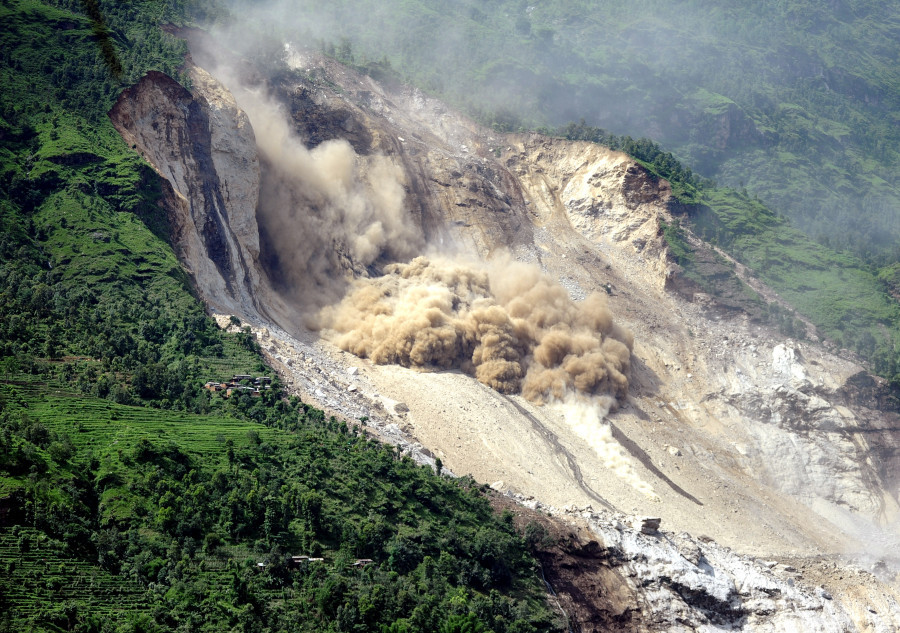Contents [hide]
The causes of landslides, their severity, some precautionary measures required to prevent landslides, some pre-landslide warnings, what to do when it happens and what to do after it takes place are given ahead. Although landslides do not occur everywhere, the risk of earthquakes in the near future can be as high as in mountainous areas.
1. The meaning of the word ‘landslide’
A part of a hard or brittle hill or hillock that suddenly collapses and goes downhill is called a ‘landslide’. Sometimes this happens very fast, sometimes it takes hours, days or even months. Most of the time, a mixture of rocks, soil, water, mud, etc. comes down very fast during landslides.

2. Causes of landslides
A. Natural causes
Landslides can be caused by a number of factors, such as heavy rainfall, rapid melting of snow, earthquakes, storms, volcanic eruptions, fires (fires caused by friction between trees or temperature rise).
B. Man-made causes
1. Humans dig deep into the ground, and as a result, tremors are felt in the ground, thus causing fissures.
2. Explosives are also sometimes used while digging tunnels. This may also make the soil brittle.
3. Landslides can also be caused by excessive deforestation during construction activities.
3. The severity of a landslides disaster
The highest number of landslides in India take place in the Himalayan regions of Kashmir, Uttarakhand, Uttar Pradesh, Madhya Pradesh, etc. Landslides kill an average of 700 people every year in our country. Recently, due to a landslide in the village of Malin (Taluka Ambegaon, District Pune in Maharashtra) on 30.7.2014 more than 155 people, 44 out of 74 houses, as well as many animals, were buried under mounds within a few moments.
4. Some measures to be taken to prevent landslides
A. To prevent landslides, more trees should be planted in areas where landslides are likely to occur or where they have occurred in the past. This will make the roots of trees hold the ground tight and prevent landslides. Large trees as well as other plants should be sown especially in hilly areas.
B. Holes in the protective wall for water drainage should be kept clean. Also, the natural water drainage system should not be changed. Failure to do so may increase the risk of landslides, when the pressure of water is not able to escape.
C. Do not construct anything on slopes, sides and drainage channels. Do not store waste or materials alongside. Doing so could lead to landslides and further damage.
D. Before the monsoons, the mountain slopes, dangerous cliffs, etc. should be inspected, and after taking necessary measures, ensure that landslides do not occur. For this, help of the youth, village workers and experienced farmers in the area can be taken. By keeping an eye on the danger areas, these people can alert the villagers and the concerned Government agencies as soon as they notice any dangerous change.
5. Some advance warnings before a landslides
Landslides cannot be forecast every time. However, sometimes these warning are perceptible; hence, it is important to learn their meaning.
Failure to do so will prevent preparedness in case of landslides even after advance warning. Sometimes the slow-moving changes around us can lead to massive landslides. Pay attention to such natural occurrences.
A. Sudden jamming of doors and windows.
B. Watch out for some warning signs such as subsidence of building, cracks on rocks, muddy river water.
C. Broken water lines and other underground utilities (carrying electricity, etc.).
D. Sunken or down-dropped road beds.
E. Sudden increase or decrease in water flow or for a change from clear to muddy water.
F. Sudden decrease in creek water levels though rain is still falling or just recently stopped.
G. Sudden tilting or cracking of trees, fences, pillars, protective walls, etc.
H. New cracks or unusual bulges in the ground.
I. New springs bursting forth.
6. Precautions to take during a landslide
A. If a mound of mud is coming towards you at the time of a landslide, avoid crossing roads, bridges, and try to move to a height away from the mound path as soon as possible. Avoid going to the scene of the landslide as well as near river basins, since mounds accumulate in low-lying areas during landslides.
B. Landslide debris moves from uphill to downhill. You should, therefore, avoid lowlying areas or valleys.
C. If you notice any warning signs such as unusual sounds such as trees cracking or boulders knocking together, move away from the area.
D. If you cannot move away from the affected area at the time of a landslide or are worried of being buried under a mound, take shelter under a strong table or a bench. You can use a pillow to protect your head. Be especially alert when driving.
7. Steps to take after a landslide
A. Do not touch / walk over loose material and electrical wires or poles.
B. Move away from landslip path and downstream valley quickly.
C. Check for injured and trapped persons.
D. Do not move an injured person without providing first-aid unless he / she is in immediate danger.
E. Do not drink contaminated water directly from rivers springs, wells, etc.
F. Locate the nearest public shelter.
G. Stay away from the slide area. There may be a danger of additional slides.
H. Re-plant damaged ground as soon as possible. Erosion caused by loss of ground cover can lead to flash flooding.
I. Stay away from the location until the emergency workers and the experts confirm that it is safe.
(Reference : pocketbook-do-dont-1.pdf and usgs.gov/natural-hazards/landslide-hazards/science/landslide-preparedness)
To increase your spiritual strength must read Do not feel scared in such situations – take autosuggestions !

 Cold wave : How to deal with it ?
Cold wave : How to deal with it ? How to deal with disasters such as World War, earthquakes, etc. ? (Part 3)
How to deal with disasters such as World War, earthquakes, etc. ? (Part 3)